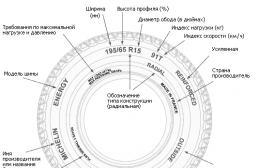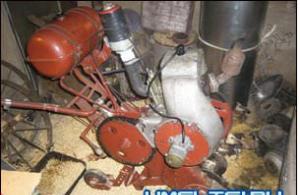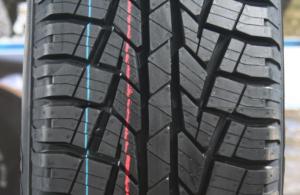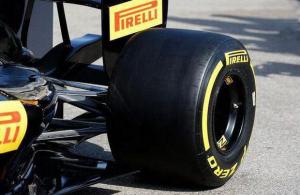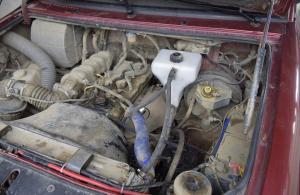The payment of any tax by the population is an obligation for everyone, which is present both in our country and around the world. This ensures the activities of the state and other institutions. There are several types of deductions:
- transport;
- to the ground;
- Personal income tax;
- at a profit.
This article will focus specifically on the transport tax. Let's consider this topic in more detail.
general characteristics
Transport tax is categorized as regional. This means that he obliges to pay only on the territory of his subject. The procedure for introducing this type of tax is presented in Chapter 28 of the Tax Code of the Russian Federation.
The legislative authorities of the constituent entities of the Russian Federation independently determine:
- Tax rate (within the framework established by the Tax Code).
- The amount of benefits.
- Payment procedure and period.
Features for individuals and legal entities
This type of tax, based on article 357 of the Tax Code, must be paid by everyone who has registered at least one vehicle.
Payers of TN are:
- individuals;
- legal entities.
Transport must be registered with the traffic police. The owner's data is indicated in the vehicle's passport, contract or other document that confirms the right to own it.
Objects subject to taxation include:
- Ground transportation.
- Air Transport.
- Water transport.
Individuals pay transport tax usually after receiving a receipt or notification.
Entrepreneurs, however, must independently submit the required documents and fill out a declaration each reporting tax period. They are also obliged to make advance payments for transport tax every quarter.
The terms of payment, the conditions of accrual and the reporting period for legal entities differ from the indicators provided for individuals, but the tax base for fees remains the same.
How to calculate?
 To determine the amount of tax on transport registered to a legal entity, the following formula is applied:
To determine the amount of tax on transport registered to a legal entity, the following formula is applied:
TN = NS * NP * NB, where:
- НС - the tax rate, which depends on the power of the vehicle or other parameter of the object;
- NP - period, which is usually one year;
- NB - tax base (capacity or other characteristic).
In turn, regional regulations may provide for other additional adjustment factors that will affect the final calculation of the amount of transport tax.
For individuals, the amount of payment is calculated according to the following formula:
CH = H HP * HC * (t / y), where:
- H l. with. - the number of horsepower;
- t is the number of months of ownership;
- y is the number of months in a year.
On January 1, 2004, a law came into force on levying an increased tax from the owners of expensive foreign cars. That is, if the cost of light transport is over three million rubles, then a multiplying coefficient is used.

In calculating the tax on expensive foreign cars, both a factor increasing in value and a decreasing one in terms of age are taken into account. In other words, the newer the car, the higher the tax on it.
If the reporting period has not been established by the regional authorities, then the multiplying coefficient is used once, when the tax is calculated for a year.
By this time, all data, as well as the average cost of the vehicle, should be known.
Tax rates
Since the transport tax is regional, the rates may differ for each region. But despite the fact that the constituent entities of the Russian Federation can regulate and establish them, the tax code sets a limit that does not allow the rate to be exceeded by more than 10 times.
Changes can be both up and down, but within the limits.
Article 361 of the Tax Code of the Russian Federation establishes base rates for all regions, which are shown in the table below.


How to find out how much horsepower
Horsepower is used to calculate engine power. Anyone who is in one way or another connected with the topic of cars knows that this indicator is necessarily indicated in the vehicle passport.
To calculate it you will need:
- a car;
- service center.
To have an idea and clearly understand how the process of measuring engine power goes, you need to pay attention to the following points:
- To calculate the indicator, use the European or domestic system. According to both methods, 1 liter. with. is equal to 75 kilograms, which rise 1 meter in 1 second.
- The horsepower indicator can be converted to kilowatts, then 1 hp. with. equal to 0.735 kW.
- For the simplest calculation of the amount of horsepower, it is better to go to a service station equipped with modern computer technology and perform the following sequence of actions:
- the car is parked on a specially equipped area;
- gas is squeezed out to the end;
- while the engine is in working order, the device reads all the parameters of the car and gives the obtained result.
Calculation examples
Let's consider several calculation options using specific examples:

Calculator
The vehicle tax calculator allows you to calculate the amount required to be paid by the owner of a car that has been registered and registered, regardless of whether you are an individual or a legal entity.
When the due date is due, you usually receive a notice or receipt. But it happens that the letters do not reach. Then you can use an online calculator to calculate the tax.
The following data must be entered:
- region;
- type of vehicle;
- power;
- the year for which the TN is paid.
For example, you can use the following online services:
For the avoidance of misunderstanding, the tax must always be paid on time and in the amount indicated in the notice. Tax evasion has serious consequences. If the notification came by mistake, it is imperative to contact your inspection.
The concept of "horsepower of a car" was introduced in the 18th century by James Watt. It is a parameter that measures the power of a car compared to the power of a horse.
1 horsepower or hp is equal to the power required to lift a 75-kilogram load to a height of one meter in 1 second. In some cases, it is customary to translate hp. in kilowatts - then 1 horsepower will be equal to 735.5 W or 0.735 kW.
To determine the power in hp. of a specific car, it is necessary to convert the kW indicated in the passport data into horsepower. It is done like this: the given values in kilowatts are simply divided by 0.735. The final value will mean the horsepower of a particular car.
Several examples for comparison.
- Nissan Micra with a 1 liter engine has a power indicator of 48 kW. To determine the parameter in horsepower, you must divide 48 / 0.735. It turns out 65.3 or roughly 65 horses.
- The sports version of the famous Volkswagen Golf with a 2.0-liter TSI engine has a power of 155 kW. Dividing the number by 0.735 gives the value in hp. - 210.
- The passport data of the domestic "Niva" indicates 58 kW, which is equal to 79 hp. This value is often rounded up to 80 hp.
There is another way to calculate horses. Almost any large service station has a special setting that easily determines how much horsepower is in the car. The car is lifted onto the platform, fixed, the accelerator pedal is squeezed out to the stop. The computer will calculate the value in a few minutes.

It is customary to distinguish between 2 measurement systems: domestic and European. Both equate hp. up to 75 kg x m / s.
So the horsepower in the car is equal to the kW divided by 0.735. Kilowatt is the metric unit of horsepower. Scientifically, it is comparable to the work performed in 1 second when lifting a load weighing 75 kg to a height of one meter. All this taking into account gravity.
A modern car is considered highly efficient if its engine has more power in relation to the mass of the vehicle. Or like this: the lighter the body, the more the power parameter will allow the car to accelerate.
This is clearly seen below on the example of high-performance cars.
- Dodge Viper with a capacity of 450 hp has a total mass of 3.3 tons. The power / weight ratio is 0.316, acceleration to hundreds - 4.1 s.
- Ferrari 355 F1 375 hp - gross weight 2.9 t, ratio - 0.126, acceleration to hundreds - 4.6 s.
- Shelby Series 1 320 hp - gross weight 2.6 t, ratio - 0.121, acceleration to hundreds - 4.4 s.

Some automotive publications write that the price of a car is determined only by the "horses" under the hood. Is it so? And why do they prescribe torque or KM in the technical data of the car?
CM is a consequence of influencing the lever, familiar to everyone from physics lessons. Accordingly, the measurement term in Nm is also displayed. In the internal combustion engine, the role of the lever is played by the crankshaft, and force or energy is generated by the combustion of fuel. It acts on the piston that creates the CM.
It turns out that the magnitude of KM is also important, as well as power. Only the last parameter implies already another work performed per unit of time. It shows how many times the internal combustion engine creates CM in a unit of time. Power is determined by the amplitude of rotation of the power plant or revolutions, which means it depends on the CM. That is why it is calculated in kilowatts.
Now directly about the influence.
- The power of the car is required to force certain resistances. The higher it is, the more the car is able to drive. In this case, the opposing forces are the forces of friction and wheel rolling, the resistance of the oncoming air, etc.
- KM affects the capabilities of the car directly, because next to the "horses" parameter, revolutions are always written, on which the optimal power depends.
Thus, the vaunted horsepower of a car is nothing without torque, because it is the latter indicator that determines the dynamics of acceleration, affects the achievement of the peak of power by the engine.

Horsepower also directly affects the transport tax, which is determined by the law of the country. The higher it is, the more you will have to pay for the car.
You can also calculate the tax on a car or fuel pump on your own, using the following formula: hp. vehicle x current rate and a component derived from the ratio of the vehicle's ownership period to the total number of months in a year.
Example 1.
Lada Vesta is equipped with an engine that develops 105 hp. If the owner lives in Moscow, then the tax rate for today is 12 rubles. From this it turns out that the cost of the heat pump for 1 year will be equal to:
- 12 × 105 = 1260 rubles.
Example 2.
Volkswagen Golf, equipped with a 2.0 TSI GTI engine with 152 kW KM, has a power of 207 hp. We calculate the tax:
- 12 × 207 = 2484 rubles.
Example 3.
The top car Ferrari GTB coupe has 270 horses under the hood. Accordingly, the tax will be:
- 12 × 270 = 3240 rubles.
Before, the trees were bigger, the sun was brighter, and the cars pulled better - remember, just 20 years ago, 115 hp. enough for the heart to go to the heels, and the car to go beyond the horizon. Now sometimes even 200-horsepower motors do not give the impression of being powerful. “Doesn't pull” - laments the owner of the new car. And he doesn’t realize that it’s not a matter of power or volume - but, perhaps, that the figures on paper do not correspond to real indicators. It is written - 100 horsepower, but in reality - less than 100. It is written that acceleration - 9 seconds from zero to "hundreds", but in fact more than 13. How can this be? Let's tell you now.
At first, there were rumors: information was periodically leaked on car forums that certain brands, or rather specific manufacturers, did not always have the engine power corresponding to the declared indicators. Then there were facts: turning to specialists, we received a clear answer: yes, such facts do take place. Naturally, we decided to investigate and either confirm or deny this information.
Well, then the intrigue began: several dealers at once, having learned why we were taking the car, at the last moment refused to provide it. We had to go for a trick: instead of the rumored brands, we took their "clones" with the same motors. And they sent it to the power metering stand. If you think about it, you can guess what brands we are talking about, if Skoda and KIA were our "clones".
 Skoda Rapid is equipped with an "all-Volkswagen" engine, which can be found on cars of different brands
Skoda Rapid is equipped with an "all-Volkswagen" engine, which can be found on cars of different brands  Rio "in the base" is equipped with a very powerful engine: among "state employees" 123 hp. pp. taken from a volume of 1.6 are almost a record
Rio "in the base" is equipped with a very powerful engine: among "state employees" 123 hp. pp. taken from a volume of 1.6 are almost a record We sing a song to the madness of the brave: Skoda and Kia dealers understood what they were doing. They realized what consequences the information that the engine of a brand-new car, which had just been run-in, lacks two or three, or even a dozen "horses", can lead to. But the cars were provided without any conditions. And they waited - with a phone in one hand and with validol in the other.

For measurements, we went to one of the oldest and most reputable companies in Belarus. Its owner, Andrei Batechko, is well known in the Belarusian motorsport, especially in rallies. And almost all powerful cars in the republic, both serial and created for motorsport, passed through his dyno. The DynaVtech inertial dynamometer allows measurements on vehicles with any type of drive - front, rear, full, in a speed range of up to 260 km / h.

The measurement process is as follows: the car is placed on inertial drums, and is fixed with straps in front and behind. Two powerful fans are supplied to the radiator grille to provide the necessary air flow. Next, the engine starts, and begins to spin the drums to the maximum speed, which is achieved in the penultimate, direct gear. The drums have a certain inertia - it is by how quickly the engine can spin them up to a certain speed that its real torque is determined. And after acceleration to the maximum, neutral is turned on, and the run-out is measured - according to how long the drums will rotate the drive wheels with their inertia, transmission losses are determined. Based on the test results, both parameters are compared by a special program, and the engine power "on the flywheel" is calculated - that is, the data that all automakers indicate in the technical data.

The first to enter the stand is the Skoda Rapid with a 110-horsepower gasoline engine and a 5-speed manual gearbox. The air conditioner is off, ESP is off, the engine is warmed up to operating temperature, outside - 20 degrees Celsius. Forward.
While the Rapid doesn't sound as menacing as a supercar, it makes you want to step back and forth during the measurement process. The front wheels spin the drums madly, the tires are already screeching with speed, the car strapped by the belts twitches, as if trying to break off, and the speed on the scoreboard grows unnaturally fast: Rapid accelerates to 200 km / h as quickly as if it were a Ferrari. But in fact, this is an illusion: in real conditions, the car will accelerate to such speeds much longer due to aerodynamic drag.

“Good run-out, Skoda is likely to have very small transmission losses,” Andrey comments. “Plus, there are obviously tires with low rolling resistance.”
So what did the manufacturer promise there? Four-cylinder naturally aspirated engine with a working volume of 1598 cc must develop a power of at least 110 liters. with. at 5800 rpm, the maximum torque of 155 Newton meters is reached at 3800 rpm. And what is in practice?
Tests have shown that the engine power turned out to be even slightly higher than the declared one - 111.6 liters. with. at 5701 rpm. But the peak torque is slightly lower than stated: 151 instead of 155 Newton meters, at 3989 rpm. Well, the scandal did not happen - 4 Newton meters could well have been "lost" because of the fuel, and in general, such a breakdown fits well into the error. Let's see what Kia shows.

The Rio has the most powerful engine in its class: with a volume of 1591 cm3. he develops 123 hp. with. at 6300 rpm, and the peak torque of 155 Newton meters falls at 4300 rpm. And what will the measurements show?
At first, there was almost a sensation: Rio fell short of the declared performance! Slightly, but did not hold out. What is the reason? Have the rumors been confirmed? No: having studied the characteristics of the Rio, Andrey came to the conclusion that the measurement should be carried out in not 4th, but in 5th gear. Why? That's right, because the Rio with this motor has a 6-speed gearbox.

And then everything fell into place: the stand showed that the engine produces 124.1 liters. with. at 6304 rpm, and the peak torque of 155.5 Newton meters falls on 4362 rpm.
Well, the sensation did not happen: in both cars we tested, the "herd" under the hood corresponds to the declared one. However, we were alarmed by the reaction of other dealers, who flatly refused to provide cars for measurements: what are they afraid of?
We decided to find out in any way, so in the near future we are planning to bring all "state employees" to the dyno. And then - and models of other classes, including used ones, to find out how many "horses" motors lose when they run 100, 150, 200 thousand kilometers. And figure out who wears out faster - turbocharged or "aspirated"? Gasoline or Diesel? And how does a hybrid with a range of under 300 thousand kilometers feel in general? We hope the dynamometer "tells" more than any diagnostics! We will return to the question of real power later, because the topic is interesting.
We bring to your attention a video report about the tests from our partners, the channel Test-Drive.tv.
Attention! You have JavaScript disabled, your browser does not support HTML5, or you have an old version of Adobe Flash Player installed. 
In Russia, owners of all types of vehicles, except agricultural ones, are obliged to pay a transport tax annually.
These payments cover the cost of repairing and maintaining roads, as well as payment for environmental damage.
The law introduced a unified scale of transport tax for horses, but the Tax Code allows regions to increase and decrease rates at their own discretion.
 Although horsepower is no longer the official unit for measuring engine power in the Russian Federation, it is still applied when calculating the insurance premium for OSAGO and the vehicle tax rate.
Although horsepower is no longer the official unit for measuring engine power in the Russian Federation, it is still applied when calculating the insurance premium for OSAGO and the vehicle tax rate.
People themselves are also accustomed to this measurement. At the same time, many are concerned about the question of why the transport tax depends on engine power.
The logic of the legislators is clear. The more powerful the car, the more overall it is, respectively, it creates an increased load on the road surface.
Since the costs of repairs are compensated for by taxes, then their size for owners of more powerful vehicles should be more significant.
Engine power is usually measured in horsepower. 1 l. with. shows the power required to lift a 75 kg load to a height of 1 m in 1 s.
Usually this indicator is measured in kW, but the value of l. with. varies in some countries. In Russia, 1 horsepower is equal to 735.5 watts.
 There are several methods for determining the horsepower of a vehicle's engine:
There are several methods for determining the horsepower of a vehicle's engine:
- If you have documents for a car, you need to look at the engine serial number in them. Then add the last 6 digits in pairs, and divide the result by 8.5. The resulting value is the number of horses.
- You can look for a service center that has units for calculating engine power. They allow you to set the value to 100% accurate.
- Knowing the power in kW, it should be multiplied by 1.35962.
- You can divide the power of the car by 0.735, but the result will not be as accurate as in the previous case.
The law does not establish a uniform procedure for calculating the amount of horsepower, so measurements can be difficult. The tax office recommends rounding the resulting value to two decimal places.
Rate under the Tax Code depending on the number of liters. with.
Detailed table of transport tax by engine power, current for 2019:
| Vehicle type | Engine power, hp with. | Tax rate, rub. for 1 liter. with. |
| Cars | up to 100 | 2,5 |
| 100,1 — 150 | 3,5 | |
| 150,1 — 200 | 5 | |
| 200,1 — 250 | 7,5 | |
| from 250.1 | 15 | |
| Trucks | up to 100 | 2,5 |
| 100,1 — 150 | 4 | |
| 150,1 — 200 | 5 | |
| 200,1 — 250 | 6,5 | |
| from 250.1 | 8,5 | |
| Motorcycle / scooter | up to 20 | 1 |
| 20,1 — 35 | 2 | |
| from 35.1 | 5 | |
| Bus | up to 200 | 5 |
| from 200.1 | 10 | |
| Snowmobile / snowmobile | up to 50 | 2,5 |
| from 50.1 | 5 | |
| Boat / powerboat | up to 100 | 10 |
| from 100.1 | 20 | |
| Jet ski | up to 100 | 25 |
| from 100.1 | 50 | |
| Yacht and other sailing and motorized vessels | up to 100 | 20 |
| from 100.1 | 40 | |
| Aircraft / helicopter and other ships with engines | from 1 l. with. - 25 | |
| Non-self-propelled vessel | From 1 ton of gross tonnage - 20 | |
| Airplane with jet engine | with 1 kg of traction force - 20 | |
| Other vehicles without engine | from 1 unit TS - 200 | |
Thus, the transport tax varies depending on the engine power: the more it is, the higher the rate.
For example, the tax rate on cars and trucks changes every 50 horsepower. If the rate is 150 liters. with. equals 5, then by 170 horses it is the same, and by 200 horses it will already be higher.
Most often, only 2 tax rates apply to other types of transport - one for engine power up to 100 hp. with., the other - for a capacity of more than 100 liters. with.
 If we consider what the transport tax on 150 horses in different regions, it turns out that in some regions of the Russian Federation it is zero, while in others it reaches 25 rubles. for 1 liter. with.
If we consider what the transport tax on 150 horses in different regions, it turns out that in some regions of the Russian Federation it is zero, while in others it reaches 25 rubles. for 1 liter. with.
This spread is due to the current legislation. Regional authorities have the right, at their discretion, to reduce or increase the rate tenfold.
For example, for a car with engines up to 100 hp. with. the tax rate in the Perm Territory, Vologda Region, Bashkiria and Sakhalin is maximum 25 rubles.
In the Kaluga, Kaliningrad, Tomsk regions, in Khakassia and North Ossetia, this figure is significantly lower - 5-6 rubles.
In the Khanty-Mansiysk and Nenets Autonomous Okrugs, as well as in Chechnya, the tax rate is zero for vehicles with an engine power of up to 150 horses.
How to calculate the amount of payments?
Vehicle owners do not need to calculate the amount of tax - the Federal Tax Service will do it for them.
Federal Law No. 52 of 04/02/14 requires that citizens independently register their vehicles, on which tax is charged in the future. Otherwise, the car owner faces a fine.
Another situation with legal entities... Their law obliges them to independently calculate their transport tax and submit data to the Federal Tax Service in a timely manner.
It is not difficult to make such calculations: you need to clarify the tax rate at the place of registration, and then simply multiply it by the number of horses in the car.
 Transport tax is levied on all vehicles equipped with engines.
Transport tax is levied on all vehicles equipped with engines.
However, there are exceptions to this rule. The Tax Code of the Russian Federation clearly defines how many horses the transport tax is not paid.
It does not apply to cars with a capacity of up to 100 horses, purchased with the assistance of social services, and motor boats with a capacity of no more than 5 horses.
Regardless of the number of L. from., ships used by industrial enterprises for catching fish and transporting goods, as well as agricultural machinery are not taxed.
In many regions, the zero tax rate also applies to cars converted for the needs of people with disabilities, and for cars of large families.
You will be interested in:
2 comments
Hello. Please tell me, I am a veteran of military operations, registered in Moscow. I have a VOLVO S80 car. 204 h.p. I know that I do not pay tax up to 200 hp. Will I pay the car tax in full or will there be some discounts for me? Thanks in advance.
1 h.p. equal to 0.7355 kW when calculating the motor power.
History
Horsepower (hp) is a non-systemic unit of power that appeared around 1789 with the advent of steam engines. Inventor James Watt coined the term "horsepower" to illustrate how economically his machines are more economically viable than live draft. Watt found that, on average, one horse lifts 180 pounds by 181 feet per minute. Rounding off the calculations in pound-feet per minute, he decided that horsepower would be 33,000 of those pound-feet per minute. Of course, the calculations were taken for a long period of time, because for a short time a horse can "develop" a power of about 1000 kgf · m / s, which is approximately equal to 13 horsepower. This power is called boiler horsepower.There are several units of measurement in the world called "horsepower". In European countries, Russia and the CIS, as a rule, horsepower means the so-called "metric horsepower", equal to approximately 735 watts (75 kgf · m / s).
In the automotive industry in the United Kingdom and the United States, HP is most commonly used. equates to 746 watts, which equals 1.014 metric horsepower. Electric horsepower (746 W) and boiler horsepower (9809.5 W) are also used in industry and energy in the United States.


